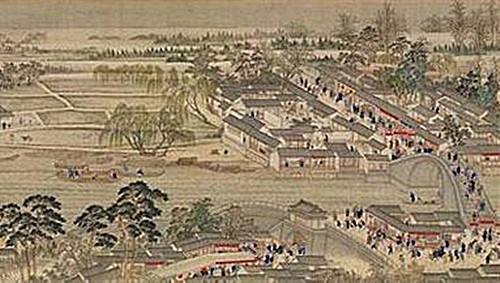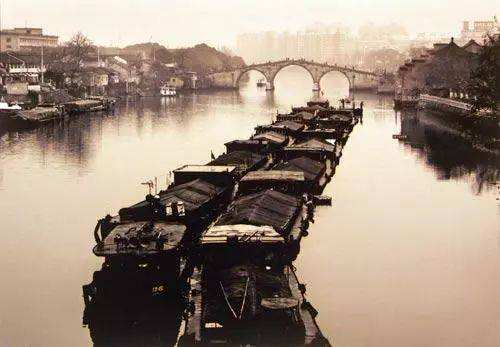The Beijing-Hangzhou Grand Canal
3 min readThe Beijing-Hangzhou Grand Canal,the Grand Canal of China,is also known as the longest canal or artificial river in the world.Starting at Tongzhou,Beijing,it passes through Tianjin and the provinces of Hebei,Shandong,Jiangsu and Zhejiang to Hangzhou,the provincial capital city of Zhejiang.The oldest parts of the canal dated back to the 5thcentury B.C.,although the various sections were finally combined during the Sui Dynasty(581-618A.D.).The Grand Canal was a comprehensive and gigantic water conservancy works with a multi-function of the transportation of goods,irrigation of fields along both sides of the Canal,and controlling of floods.Running alongside and parallel to the canal was animperial roadway and post offices supporting a courier system.The government also planted an enormous line of trees to beautify the Canal.

The Early History of the Grand Canal:As early as in the late Spring and Autumn Period(722-481B.C.),Fuchai,the emperor of the Wu(present-day Suzhou),ventured north to conquer the neighboring State of the Qi.He ordered a canal to be constructed for trading purposes,as well as a means to ship north ample supplies in case his forces should engage the northern states of the Song and the Lu.This canal became known as the Han Gou lork began in 486 B.C.,south of Yangzhou in Jiangsu Province,and within three years the Han Gou had connected the Yangtze River to the Huai River by means of existing waterways,lakes,and marshes.The Han Gou is actually known as the second oldest section of the later Grand Canal,the Beijing-Hangzhou Grand Canal,since the Hong Gou,the Canal of the Flying Geese,or the Far-Flung Canal,most likely preceded it.It linked the Yellow River near the city of Kaifeng to the Si and the Bian rivers.The exact date of the Hong Gou’s construction is uncertain;it is first mentioned by the diplomat Su Qin in 330B.C.when discussing state boundaries.The historian Sima Qian(145-90 B.C.)dated it much earlier than the 4th century B.C.,attributing it to the work of the mythological king,Yu the Great.

The Completion and later Repairs of the Grand Canal:The first emperor of the Sui Dynasty,Emperor Wen,who launched the project of the Grand Canal,and the Grand Canal was fully completed under the second Sui emperor,Emperor Yang,from the years 604 A.D.to 609 A.D.,first by linking Luoyang to Yangzhou and the Yangtze River valley,then expanding it to Hangzhou in the south,and to Beijing in the north.When the canal was completed,it linked such river systems as the Qiantang River,the Yangtze River,the Huai River,the Yellow River,and the Hai River.Its southern section,running between Hangzhou and the Yangtze River,was named the Jiangnan River,meaning the river‘South of the Yangtze’.The Grand Canal as we see ittoday was in large part a creation of the Sui Dynasty(581-618),a result of the shifting of China’s economic and agricultural central region away from the Yellow River valley andtoward what are now Jiangsu and Zhejiang provinces.Minor additions to the canal were made after the Sui Dynasty to cut down on travel time,but on the whole no fundamental differences existed between the Sui Grand Canal and the Tang Grand Canal.The waterlevel-adjusting gate,a double-gate system known as the pound lock,was invented in the 10th century in response to the necessity of greater safety for the travel of barge ships along rougher waters of the Grand Canal.This allowed ships to wait within a gated space while the water could be drained to appropriate levels and then continue to move either upward or downward the river;and the roofed hangars over the space to add further protection for the ships.During the Yuan Dynasty(1271-1368),the capital was moved to Beijing,eliminating the need for the canal arm flowing west to Kaifeng or Luoyang.A summit section was dug across the foothills of the Shandong massif during the 1280s,shortening the overall length by as much as 700 km(making the total length about 1,800 km)and linking Hangzhou and Beijing with a direct north-south waterway for the first time in history.








